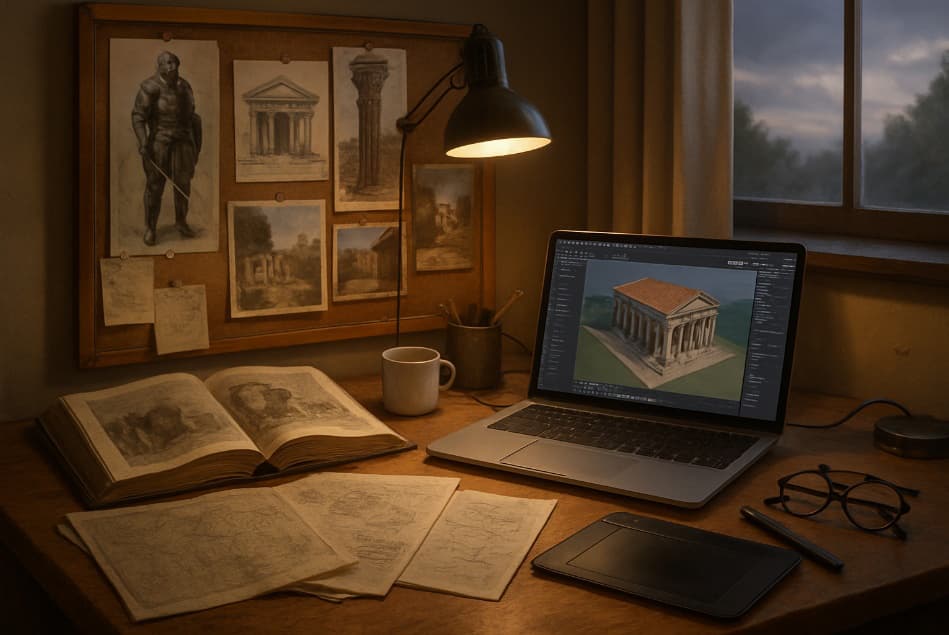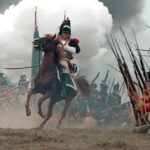Games have long become more than just entertainment. They are able to transport us into different eras, recreate key events, and let us feel the atmosphere of the past. Developers are increasingly turning to historical themes to create worlds full of detail and meaning. In strategies, the player can rule empires; in role-playing games — live the life of a hero of a certain era; and in dynamic games like Avia Masters — feel like an airplane pilot, completing missions or exploring dangerous aviator routes.
Here, not only imagination is important, but also accuracy. To create a true image of a medieval city or an ancient army, game development teams study archives, consult with historians, review drawings and museum exhibits. This adds depth, and players receive not just a game but a valuable historical experience.
Reconstruction as a bridge between the past and the game

Historical reenactors are people who recreate details of past eras in the smallest particulars: from weapons and armor to everyday life. They are invaluable partners for game development. Thanks to their work, developers can not only read about history but also feel it through the experience of real objects and technologies.
The collaboration between reenactors and developers creates a unique synergy. As a result, games are born that not only entertain but also immerse players in the realities of the past. With VR and AR, this immersion becomes even deeper — the player literally finds themselves in another time, living history with their own eyes.
Here are some examples of how reenactors help game studios:
- Authentic movements and gestures. During motion capture, reenactors demonstrate real combat techniques, walking in armor, or handling historical weapons so that animations in the game look authentic.
- Detailing of objects. They create exact copies of old weapons, clothing, tools, and provide them as references for artists and 3D modelers.
- Consultations on everyday life. Thanks to their knowledge, authentic everyday scenes appear in the game: how food was prepared, how dwellings were built, what traditions accompanied certain holidays.
- Historical color. Reenactors suggest which colors, symbols, and ornaments were characteristic of a particular era, making the game world more lively and recognizable.
- Authenticity check. They help developers avoid gross mistakes when details of different eras are accidentally mixed.
Thanks to this collaboration, games become not only creative but also real interactive textbooks, where history appears not as a dry fact but as a living experience.
How games are used for teaching history
Modern education is actively implementing game technologies to make history more vivid and interesting. Here are some ways educators use games in history lessons:
- Strategies and simulators. Students play historical strategies, manage resources, make decisions, and see how the course of events changes. This way, they better understand the reasons for the rise or fall of states.
- VR reconstructions. Thanks to virtual reality, students can “visit” ancient cities, castles, or battlefields, immersing themselves in the atmosphere of the era.
- Interactive tasks. During lessons, mini-games and quests are used: for example, find a historical artifact or recreate an event in the form of a dialogue between characters.
- Project work. Students create their own simple games or levels dedicated to historical events, research the material, and present the results to the class.
- Gamification of lessons. Using systems of points, levels, and rewards to motivate students to actively participate in discussions and study topics.
- Interdisciplinary integrations. Historical games are combined with geography, art, or literature so that students see a broader cultural context.
Games and reconstructions have taught us to look at the past not as a set of dates and facts, but as a living world where you can visit, try yourself as a hero, and live your own scenario. They have turned history lessons into exciting adventures, and cities and museums into true playgrounds, where each artifact and each level adds experience.
And most interestingly — in this game, there are no boundaries. Every new research, every new reconstruction, and every new game project opens new horizons, where history comes alive, and we become not just players but creators of our own journey through time. So play, learn, travel, and discover — history is waiting for your move!



